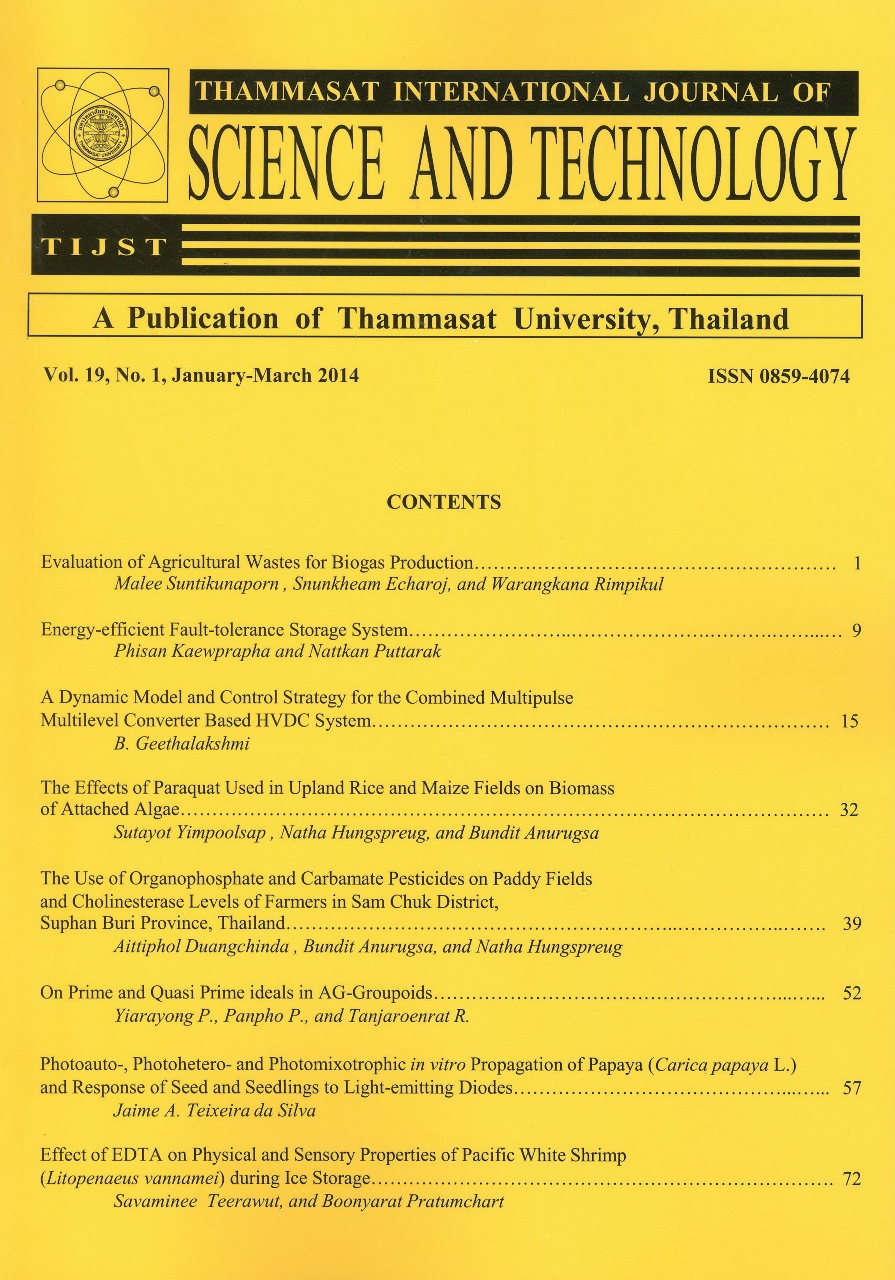Evaluation of Agricultural Wastes for Biogas Production
Main Article Content
บทคัดย่อ
The effects of the addition of agricultural wastes to anaerobic digestion systems were studied using food scraps as a model substrate and cow dung as an inocula. Anaerobic digestion experiments were performed using a floating drum type system and operated at ambient temperature. Agricultural wastes examined in this research were potato peel, baggasse, orange peel and soy pulp. The volumetric flow rate of biogas generated from co-digestion of food scraps with potato peel increased by 1,300 mL d-1, while addition of soy pulp was shown to reduce the amount of gas produced by 700 mL d-1. Characterization of the potato peel showed that it contained the largest amount of carbohydrate compared with other agricultural wastes. For all cases the percentage of methane remained constant at approximately 45%, which was shown to be enough for combustion. Furthermore, an increase in agricultural waste loading from 25 to 125 g d-1 resulted in an increase in the volumetric flow rate of biogas by almost 400 mL d-1.
Article Details
รูปแบบการอ้างอิง
Suntikunaporn, M., Echaroj, S., & Rimpikul, W. (2014). Evaluation of Agricultural Wastes for Biogas Production. Science & Technology Asia, 19(1), 1–8. สืบค้น จาก https://ph02.tci-thaijo.org/index.php/SciTechAsia/article/view/17054
ประเภทบทความ
Articles


